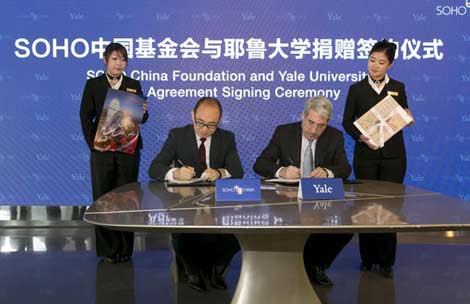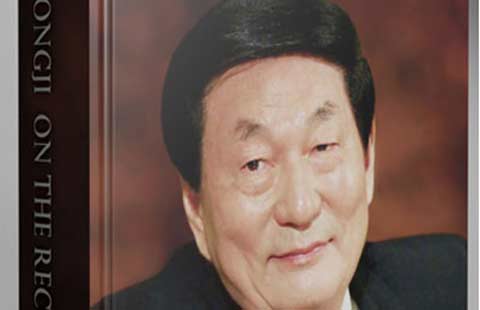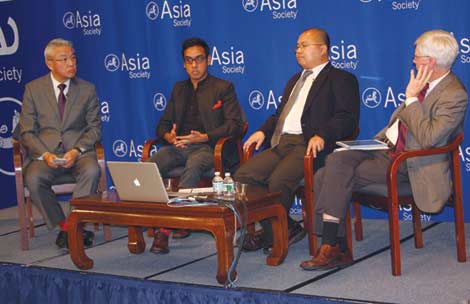Chinese plant to utilize US firm's technology in fuel ingredient production
Updated: 2014-09-13 06:41
By AMY HE(China Daily USA)
|
||||||||
UOP LLC, a subsidiary of Honeywell International Inc., is working with a Chinese petrochemical company to provide new technology in the production of a key fuel ingredient, the company announced.
The Illinois-based firm has been selected by the Shandong Shouguang Luqing Petrochemical Company for its Oleflex technology to make isobutylene, a component used in making high-octane fuel and synthetic rubber.
The Oleflex process converts propane or isobutene to make light olefins, which then can be used to produce more valuable fuels and chemicals used in plastics, packaging, and textile production, the company said.
"China needs to produce more isobutylene to meet its rapidly increasing consumption needs, so we are pleased to announce another C4 Oleflex license to help meet this need," said Pete Piotrowski, senior vice president of UOP’s Process Technology and Equipment business unit, in a statement released on September 11. "Oleflex technology is proven to have the smallest environmental footprint, the lowest cash cost of production, and the highest return on investment compared with competing technologies, and we look forward to continuing to offer this value in China and other parts of the world."
Expected to begin production in 2016, the unit will produce approximately 170,000 metric tons annually of isobutylene at its facility in Shandong Province. UOP will provide the engineering design, technology licensing, catalysts, equipment, staff training and technical service for the project.
"China is the world's largest energy consumer and producer and it has an increasing need for fuel and everyday items made from isobutylene and propylene," Jim Rekoske, global business director of petrochemicals at UOP, told China Daily.
"Traditional sources of propylene and isobutylene no longer supply enough light olefins to meet market demand. This has created a gap that needs to be filled by other sources, such as UOP Oleflex technology," he said. "By 2020, 20 percent of worldwide propylene production is expected to come from on-purpose propylene technology. UOP is the leader in dehydrogenation technology and world leader in licensing advanced technology to the refining and petrochemical sectors."
UOP’s C4 technology is already being used at several other Chinese plants, with the company announcing partnerships with Lijin Petrochemical Plant Company, Panjin Heyun New Material Co, Longgang Chemical Company earlier this year and late last year.
According to a report from Research and Markets, total global production capacity of propylene was 104 million tons in 2012, and China produced 17 million tons that year.
"As the domestic ethylene and large refinery projects are controlled by the national macro policy, coupled with the difficult implementation of the crude oil source of small refinery enterprises, the domestic propylene production is highly monopolized," the report said.
The majority of China’s production came from two companies, Sinopec and the China National Petroleum Corporation, which accounted for 90 percent of the country’s production, it said. However, the market research firm said that the market will shift in the next year with private enterprise providing more propylene supply over State-owned enterprises. "The import will decline and the market control capability of Sinopec Group and CNPC will be decreased," it said.
Shandong Shouguang Luquing Petrochemical Company is a refiner that produces diesel, gasoline, and liquefied petroleum gas. UOP is a supplier and licensor of process technology, catalysts, equipment, and consulting services to the petroleum refining, petrochemical, and gas processing industries. Honeywell is a diversified technology and manufacturing company based in Morristown, New Jersey.
amyhe@chinadailyusa.com
- Xinjiang publishes anti-terror brochures
- Security pact sealed with Afghanistan
- President Xi encourages international cultural exchanges
- Premier Li: China willing to help Afghan infrastructure
- Chinese FM: China, Asia-Pacific become community of shared destiny
- Foreign minister remarks on possibility of China-Japan summit
Most Viewed
Editor's Picks

|

|

|

|

|

|
Today's Top News
VW defends safety of recalled New Sagitar
Former premier makes Hurun philanthropists list
Xinjiang publishes anti-terror brochures
SOHO endows $10m to Yale
Cook and Ma talk about partnership
Language a barrier to healthcare for Asian Americans
China businesses need innovation: VC
Security pact sealed with Afghanistan
US Weekly

|

|















